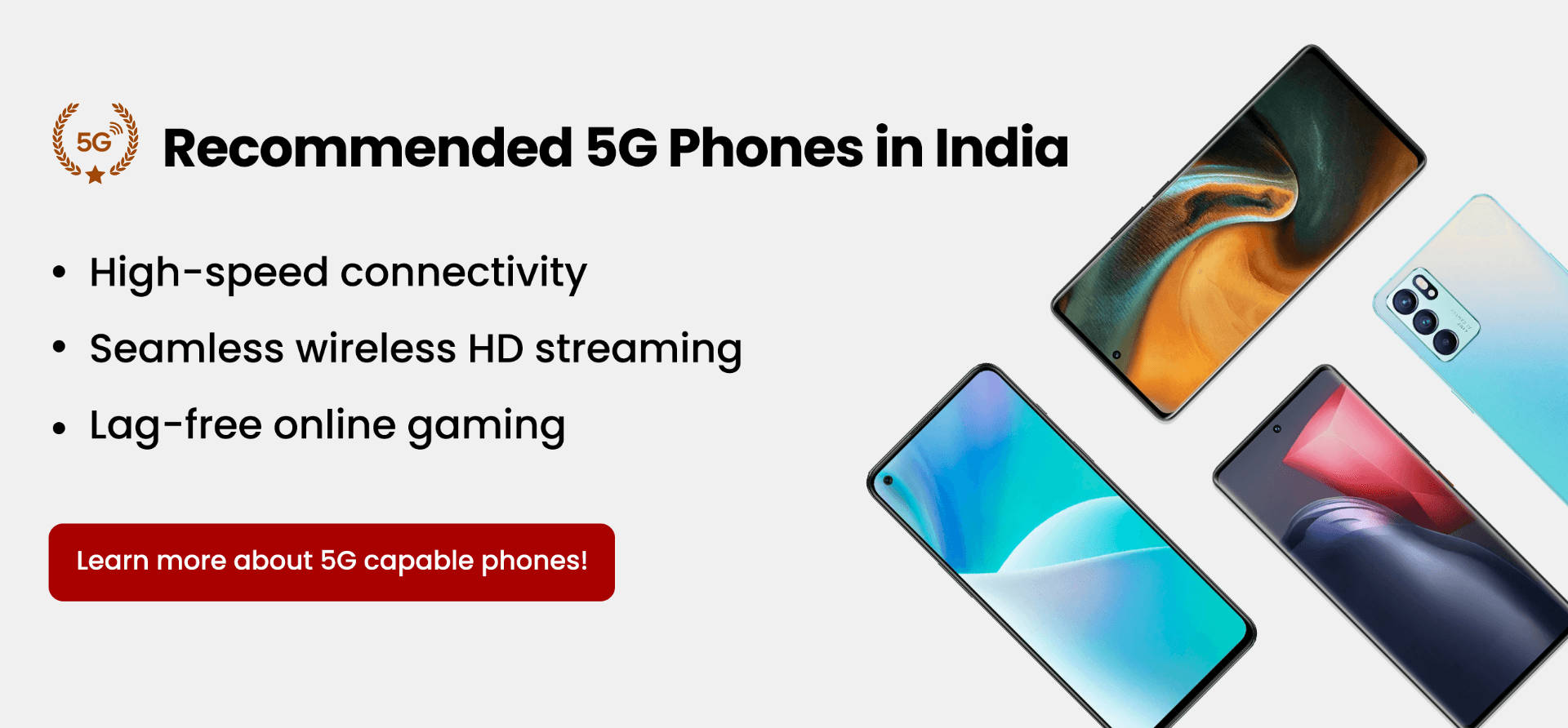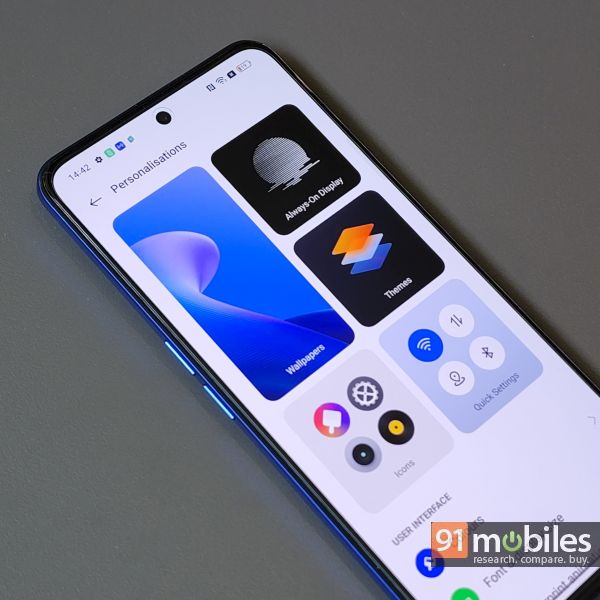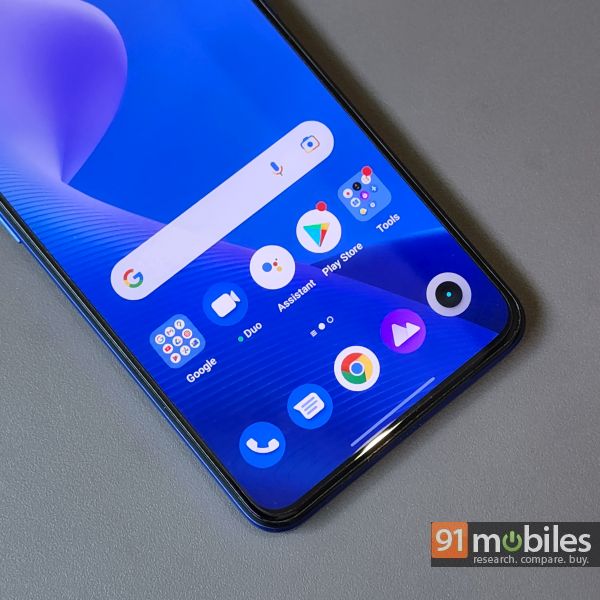Review Summary
Expert Rating
Realme is on a roll and hot on the heels of the GT 2 Pro (review) and the GT 2, the company has announced yet another premium handset in the country. Dubbed the Realme GT Neo 3, the device marks a lot of firsts for the company and is only the second phone in the country to be backed by MediaTek’s Dimensity 8100 processor. More notably, the handset is the fastest charging phone in the world and the device can refuel at a whopping 150W. Clearly, Realme’s latest concoction has all the ingredients to entice performance fiends over to its doorsteps. However, it remains to be seen whether the device is a one-trick pony or a well-rounded Android that can compete in the dog-eat-dog flagship killer space. If you had your eyes set on the phone, then you’ll want to read what I have to say about it. Here’s why.
Verdict
The Realme GT Neo 3 is a power-packed offering, although the handset’s software experience leaves a lot to be desired. Provided the company can patch some of the issues, including optimising popular Android games and apps to work with the phone, the GT Neo 3 is a no-brainer. Else, you’ll find no shortage of excellent flagship killers that retail for the same price, or even less.
The lowdown
The Realme GT Neo 3 is all about performance and what better way to convey the notion than by slapping racing stripes on the phone’s chassis? Jokes aside, the Realme GT Neo 3 is a looker and the smartphone will undoubtedly leave a lasting impression on your peers. In fact, while the handset builds upon the framework embodied by most modern Android phones, the device ships with a striking livery that helps it stand out that much more.

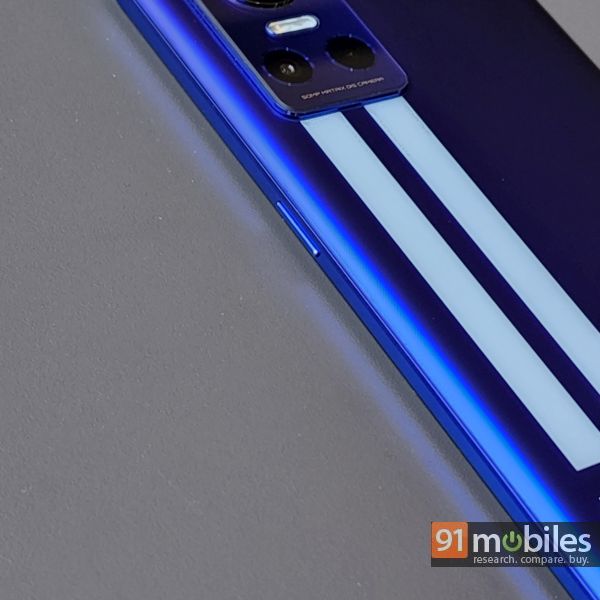
Now, you might find yourself on the other side of the fence when it comes to the design of the GT Neo 3. Thankfully, the company is offering the phone in two subtler colourways as well, including a White variant with black racing stripes called Sprint White and an all-black colourway dubbed Asphalt Black. With that said, you’ll undoubtedly echo my sentiments about the smartphone’s build quality. To wit, the handset feels superbly premium to hold, which can be accredited to its glass and metal build. Furthermore, the device is quite sleek too and tips the scales at just 188 grams. Consequently, you should be able to use the phone comfortably with just one hand as well.

Adding to the list of pros, the Realme GT Neo 3 ships with a speedy in-display fingerprint sensor and reliable facial recognition tech. The sensor has been ergonomically positioned towards the bottom of the display, so no complaints here. Furthermore, the handset offers tight and meaty haptics too, so you’ll enjoy drafting long emails or typing out messages on the phone. Much to my dismay, the device doesn’t ship with a headphone jack. On the bright side, the smartphone comes equipped with a stereo speaker setup that gets satisfactorily loud for watching movies and videos on the fly.
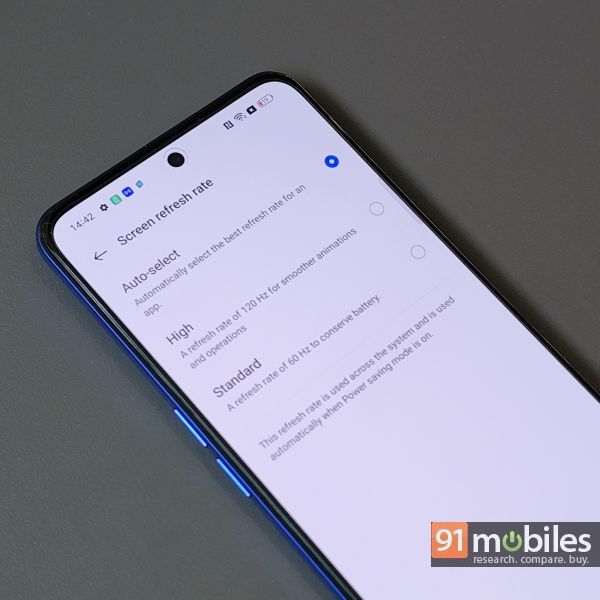
The Realme GT Neo 3 features a 6.7-inch, FHD+ AMOLED panel. The screen gets plenty bright at 1,000 nits, and the panel offers excellent viewing angles too. Needless to say, the display can refresh rapidly at 120Hz as well, meaning you’ll be able to feast your eyes on buttery smooth animations and UI transitions. That’s not all as the smartphone’s screen is bordered by extremely sleek bezels too. In fact, the device offers a screen-to-body ratio of over 94 percent, which in turn paves the way for an immersive movie-watching experience. I’d also like to point out that the display feels quite accommodating and I never felt like my fingers were fighting for space on the screen. The icing on the cake is that the panel is of the 10-bit variety and correspondingly, can relay a wider gamut of colours too.
While all that’s good and dandy, I couldn’t get the Netflix app working on the set. I tried searching for the same in the Google Play store but to no avail. That’s quite disappointing and I hope the issue doesn’t permeate to retail units.
Coming to the meat of the matter, the Realme GT Neo 3 is only the second phone (after the OnePlus 10R) in the country to utilise the MediaTek Dimensity 8100 SoC. The smartphone comes with either 128GB or 256GB of UFS 3.1 storage. Correspondingly, buyers will get either 8GB or 12GB of LPDDR5 memory with the phone. What’s more, much like iQOO’s flagship killers, the Realme GT Neo 3 also ships with a dedicated display processor that can increase a game’s FPS by means of frame rate interpolation. The tech currently works with League of Legends: Wild Rift, which isn’t available in the country yet. However, the brand is working towards optimising more games to support the feature.
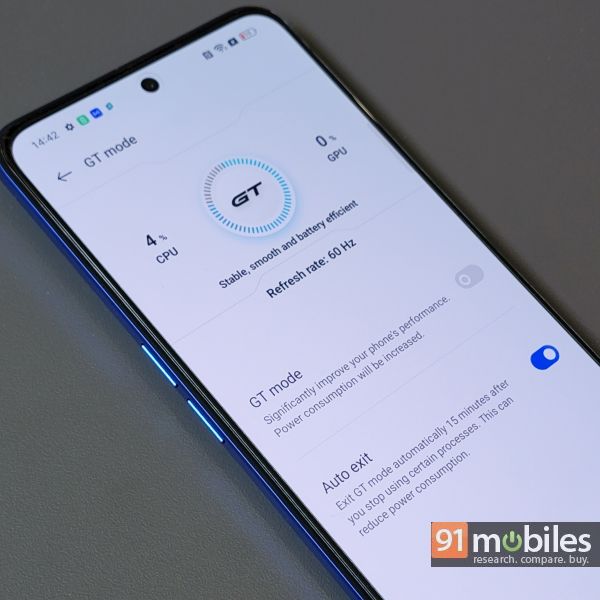
It goes without saying that the Realme GT Neo 3 is loaded to the brim with enticing specs, which begs the question – just how good is MediaTek’s all-new chipset? More importantly, is it faster than its Qualcomm counterparts? Unfortunately, the answer to that is not as black and white as I’d like it to be. You see, per Realme, the Dimensity 8100 SoC is on par, if not better than the Qualcomm Snapdragon 888 chipset. Now, to the company’s credit, the SoC does bench higher than SD888 processor in synthetic testing apps like Antutu and GeekBench. For instance, in GeekBench, the SD888-backed OnePlus 9RT (review) posted single-core and multi-core scores of 822 and 3,265 points respectively. On the flip side, the Realme GT Neo 3 yielded 973 and 3,999 points in the aforementioned tests.
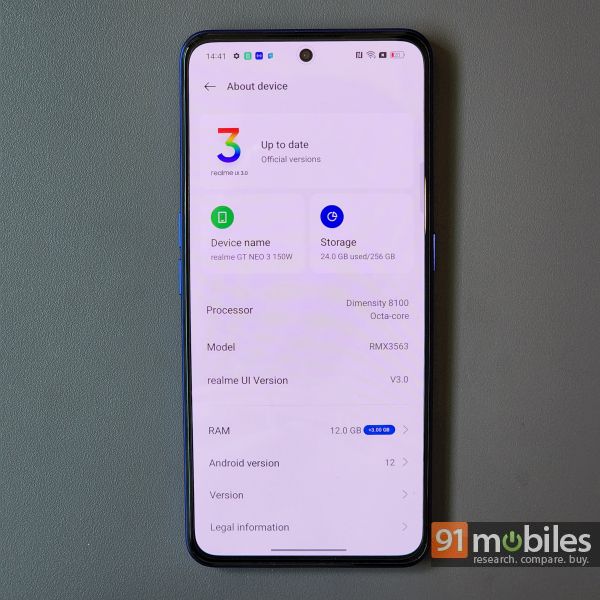
Similarly, in Antutu, the OnePlus 9RT secured 7,99,787 points. The GT Neo 3, on the other hand, outputted 8,12,535 points. The icing on the cake is that Realme’s contender kept temps in check and I rarely ran into any heating issues with the phone, which can be accredited to TSMC’s 5nm fabrication process, as well as the smartphone’s chunky vapour cooling system that dissipates heat admirably. A fringe benefit of the same is that the handset outputted significantly stabler scores in the CPU throttling test and 3D Mark’s Extreme stress test runs. In fact, the device throttled to just 91 percent of its peak performance in the former and out-turned a 91.7 percent stability score in the latter. To give you a better picture, the OnePlus 9RT’s scores fell way short at 83 percent and 66.3 percent respectively.
Clearly, the SD888 processor cannot hold a candle to the Dimensity 8100 SoC in benchmarking applications — so, what gives? Well, for some odd reason, the SoC doesn’t gel well with a lot of modern Android games. For instance, the device caps BGMI at HD graphics and High FPS preset. Similarly, the unit runs CoD Mobile at Very High Graphics and Very High FPS preset, or High Graphics and Max FPS preset.

It goes without saying that the Mali-G610 GPU powering MediaTek’s offering is more than capable of running even the most resource-hungry titles at excellent settings. Unfortunately, the games need to be optimised by either MediaTek or the game developers to function properly with the new chipsets. Now, as a consumer, should you care about the SoC’s optimisation woes? Absolutely not. In fact, if you’re a hardcore gamer, I would strongly recommend you either sit on your purchase or opt for a Snapdragon 888 device. Be that as it may, MediaTek (and in extension, Realme) is headed in the right direction – they just need to figure out the final piece of the puzzle to truly stand out.

On the bright side, the Realme GT Neo 3 has a couple more aces up its sleeves. To wit, the handset is the fastest charging phone in the world, and the device ships with a 150W brick in the box. Unsurprisingly, the smartphone charges stupendously fast, and during my stint with the device, the handset’s 4,500mAh battery refuelled from 5 percent to 55 percent in a matter of 10 minutes. That’s not all, as a full charge took just around twenty minutes, which is mind-boggling, to say the least. Suffice it to say, the Realme GT Neo 3 will rid you of all your battery anxiety. Do note that the company is also selling a watered-down variant of the GT Neo 3 that supports 80W wired charging, albeit ships with a bigger 5,000mAh cell. Correspondingly, buyers looking to save some bucks can opt for the 80W variant instead.
As for software, the Realme GT Neo 3 boots the company’s Realme UI 3.0 on top of Android 12. I’ve discussed the features of the interface in my review of the Realme GT 2 Pro, so do check it out. That said, I am disappointed that the company is offering only two years of OS upgrades with the phone.
Moving on, the Realme GT Neo 3 ships with a triple camera setup at the back comprising a 50MP Sony IMX766 wide sensor, an 8MP ultrawide shooter with a 119-degree FoV, and a 2MP macro camera. For selfies, the device gets a 16MP front-facing camera. I’ve jotted down my experience with the smartphone’s cameras below.
- The GT Neo 3’s primary sensor clicks reasonably detailed shots during the day. The images don’t offer the best corner sharpness and the device dramatises the scene a bit too. In fact, while the colours in the frame aren’t completely off, the sensor crushes the shadows in a bid to output a contrast-y, gram-worthy snap. Regardless, the images offer adequate details towards the centre of the frame and don’t exhibit any instances of highlight clipping either. I’d also like to add that the photos don’t seem overprocessed at a closer crop.
- The primary sensor can click tasteful close-ups too. Furthermore, the unit doesn’t blotch overtly vibrant hues and creates a convincing bokeh effect around the subject as well. That’s not all, as the phone’s 2x digital zoom can surprise you with detail-laden stills as well. On the flip side, the handset’s high-res images could’ve been better, and much like most other affordable flagships, the GT Neo 3’s primary sensor is guilty of oversharpening the composition as well. Rest assured, you’d be better off snapping pixel-binned shots with the device for the most part. Similarly, the smartphone’s ultrawide angle camera leaves something to be desired too. To wit, images snapped with the unit offer lacklustre corner details.
- Moving on, the smartphone’s selfie camera clicks passable selfies with a healthy amount of details around the subject’s face. That said, the handset beautifies the composition despite disabling all filters and skin-softening features. As for lowlight, the handset can squeeze out a fair bit of information from the scene with the night mode utility enabled. What’s more, the photos don’t exhibit a ton of noise, and the sensor keeps the lens flaring from various sources of light to a minimum too.
- Thankfully, the Realme GT Neo 3 comes with support for OIS for the main camera. Moreover, the handset can record both, 1080p and 4K clips in 60fps too. I did shoot some 1080p60fps videos with the phone, which, to no one’s surprise, were superbly stabilised. That said, the sensor struggles with exposure metering and on more than one occasion, exhibited blown-out highlights in the clips.
Final Verdict
The 150W variant of the Realme GT Neo 3 retails for Rs 42,500 and for the price, the device faces stiff competition from the OnePlus 10R, the iQOO 9 SE (review), and the Realme GT 2. Now, no two ways about it – the GT Neo 3 is backed by excellent hardware, and be it the unit’s processor, its main camera, or the handset’s charging tech, the smartphone’s brochure will have spec-heads salivating all over it. Be that as it may, Realme (or MediaTek) needs to optimise games for the Dimensity 8100 SoC — after all, what good is a flagship killer if it cannot run popular Android games at competent settings, amirite? Making matters worse, the device is only entitled to two more OS updates, which, for the uninitiated, pales in comparison to Samsung’s software roadmap for its Android handsets.
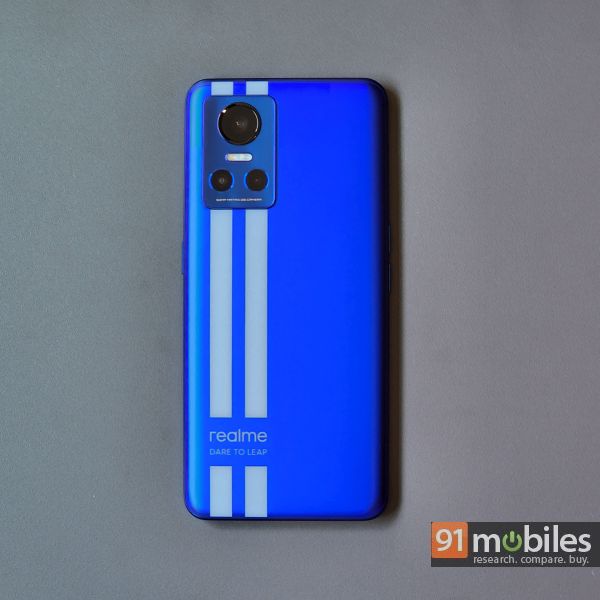
Editor’s rating: 3.5 / 5
Pros:
- Stylish design
- Capable performer
- Stupendously fast wired charging
- Stunning display
Cons:
- Some games aren’t optimised with the chipset
- Ships with bloatware
- Only two years of OS upgrades
 | Rs. 22,990.00 | Go To Store |
 realme GT Neo 3 5G realme GT Neo 3 5G | vs |  OnePlus 10R 5G OnePlus 10R 5G |
 realme GT Neo 3 5G realme GT Neo 3 5G | vs |  OnePlus 9 RT OnePlus 9 RT |


